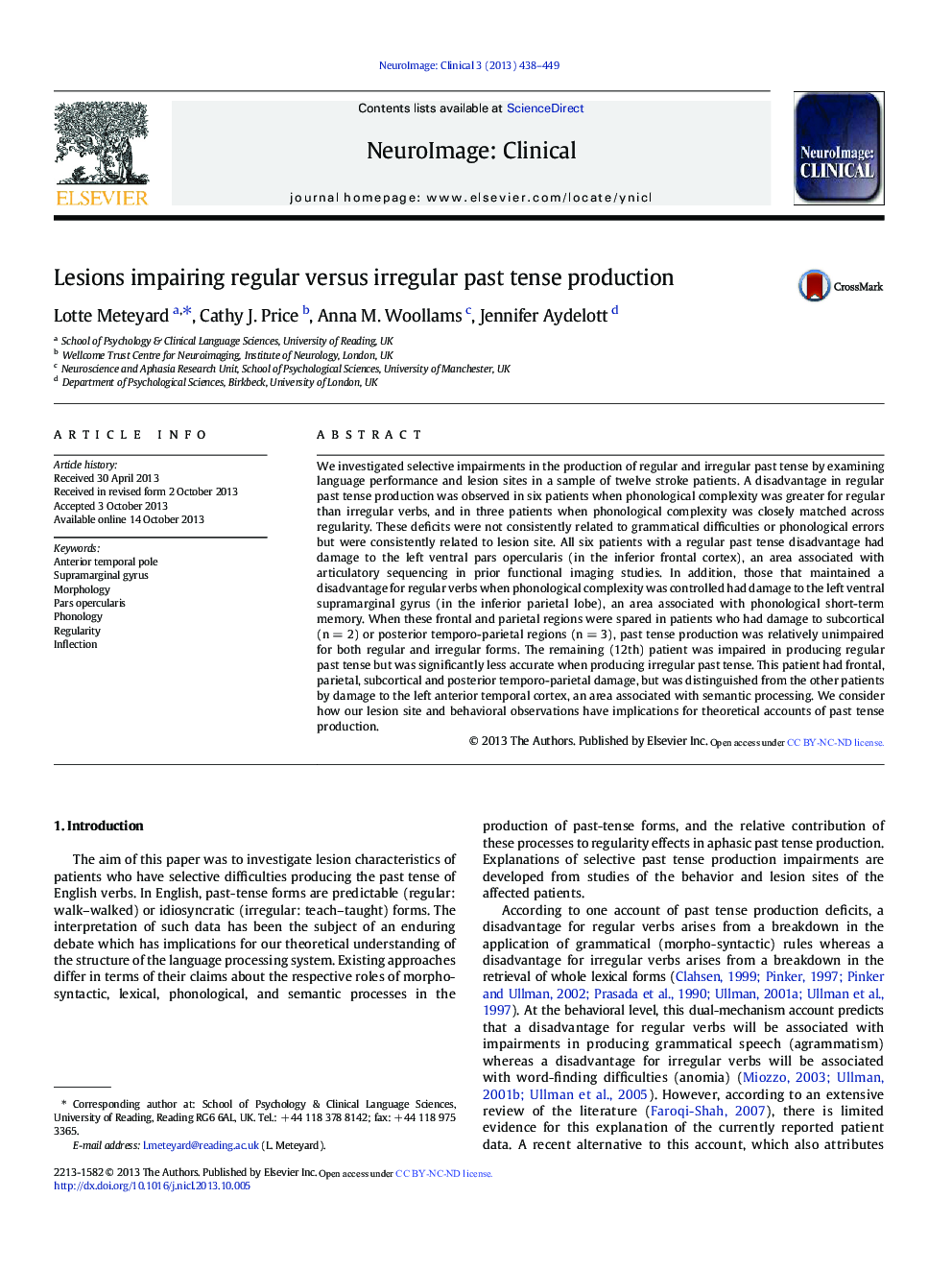| Article ID | Journal | Published Year | Pages | File Type |
|---|---|---|---|---|
| 3075414 | NeuroImage: Clinical | 2013 | 12 Pages |
•Lesions were isolated in MNI space using overlap and subtraction methods•Left vPOP lesions were associated with impaired regular past tense production•Additional left vSMG lesions were associated with robust effects of regularity•If these regions were spared production accuracy showed no effects of regularity•Lesion overlap demonstrates a network underpinning past-tense production
We investigated selective impairments in the production of regular and irregular past tense by examining language performance and lesion sites in a sample of twelve stroke patients. A disadvantage in regular past tense production was observed in six patients when phonological complexity was greater for regular than irregular verbs, and in three patients when phonological complexity was closely matched across regularity. These deficits were not consistently related to grammatical difficulties or phonological errors but were consistently related to lesion site. All six patients with a regular past tense disadvantage had damage to the left ventral pars opercularis (in the inferior frontal cortex), an area associated with articulatory sequencing in prior functional imaging studies. In addition, those that maintained a disadvantage for regular verbs when phonological complexity was controlled had damage to the left ventral supramarginal gyrus (in the inferior parietal lobe), an area associated with phonological short-term memory. When these frontal and parietal regions were spared in patients who had damage to subcortical (n = 2) or posterior temporo-parietal regions (n = 3), past tense production was relatively unimpaired for both regular and irregular forms. The remaining (12th) patient was impaired in producing regular past tense but was significantly less accurate when producing irregular past tense. This patient had frontal, parietal, subcortical and posterior temporo-parietal damage, but was distinguished from the other patients by damage to the left anterior temporal cortex, an area associated with semantic processing. We consider how our lesion site and behavioral observations have implications for theoretical accounts of past tense production.
